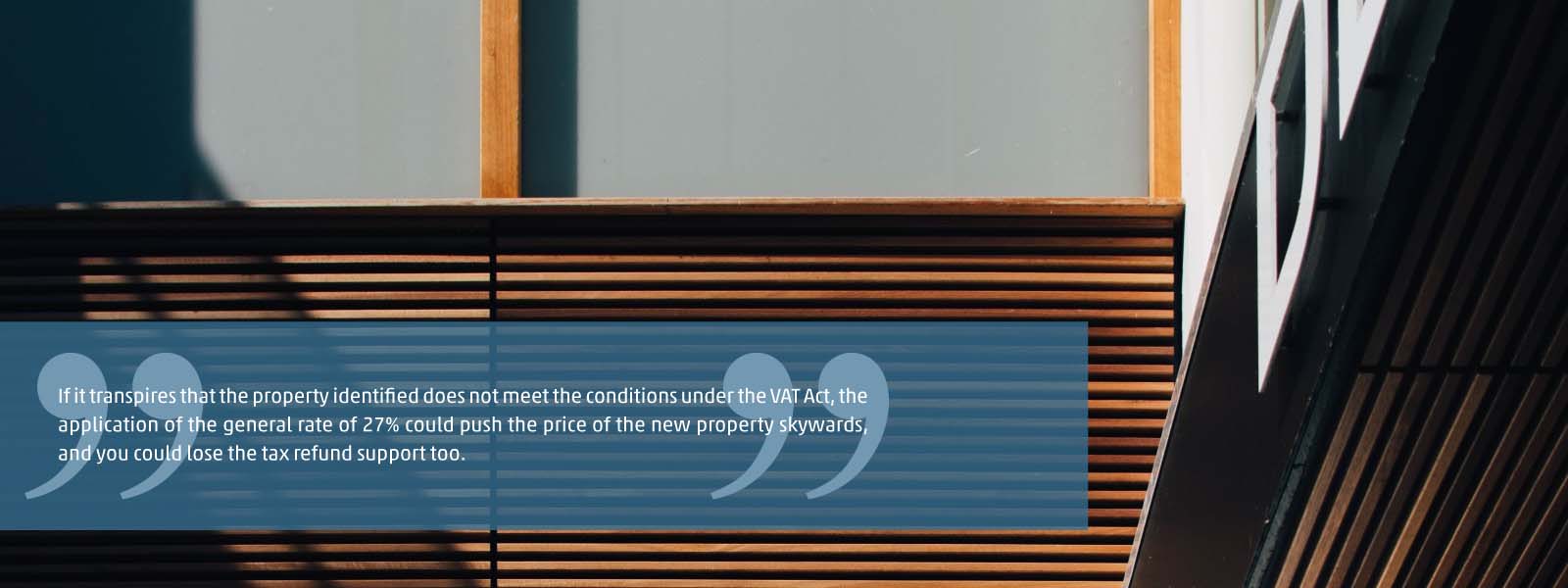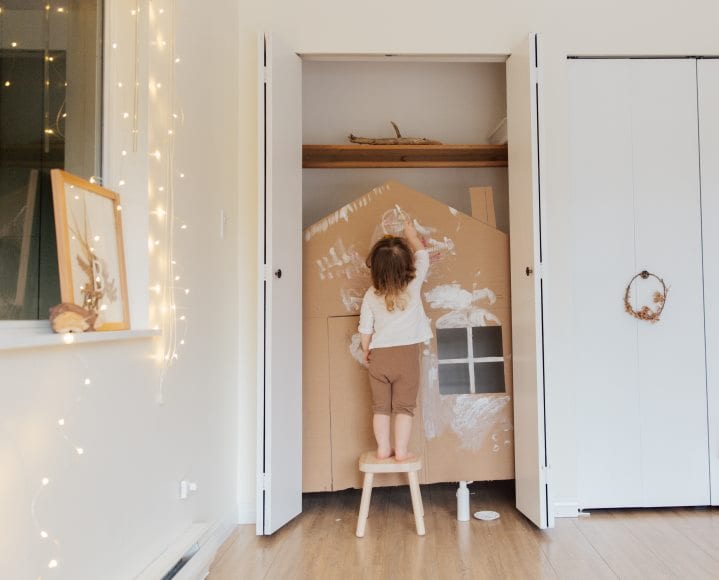In our article last November we wrote about the details of the housing support action plan to be introduced in Hungary from 1 January 2021. As a result of the legal amendments implemented to roll out the action plan, the VAT rate for new residential property dropped to 5% again from January 2021, while properties acquired using the family housing support (CSOK) are exempt from stamp duty. The support available has now been expanded once more: when buying new residential property tax refund support can be claimed up to the amount of the 5% VAT (up to a cap of HUF 5 million – roughly EUR 14,000 – tax refund is available for invoices issued with 27% VAT in certain cases).
New residential property and the CSOK
This support may certainly sound enticing for many, and could prompt families eligible for the CSOK and wanting to purchase a home to move towards buying a new residential property. However, it is worth bearing in mind that the conditions relating to properties for claiming the CSOK are not the same as the conditions under the VAT Act for the 5% rate applicable in the case of a new residential property. If it transpires that the property identified does not meet these conditions, the application of the general rate of 27% could push the price of the new property skywards, and you could lose the tax refund support too. It is also worthwhile knowing that when buying a new property there is no guarantee that all parts of the property will be eligible for the lower tax rate: you can receive invoices with VAT of 5%, and invoices with VAT of 27%. This is why we have summarised the most important points below.
Before getting started, we would like to note that the preferential tax rate in Hungary is not a new rule. Between 2016 and 2019 the VAT rate was also 5% when buying a new residential property, and the new rule valid from 2021 is almost the same as the previous one. Accordingly, the previous guidelines on the NAV website regarding the applicability of the 5% tax rate are still relevant in our view – irrespective of the fact they have now been archived. Despite this, on 15 February 2021 the NAV published new information on this topic on its website.
What is residential property exactly?
According to the VAT Act, residential property means a property established for dwelling purposes which is registered, or is in the process of being registered, in the real estate register as a house or apartment. Areas not required for the intended use as a dwelling shall not be construed as residential property, even if built adjacent to the residential building, such as: a garage, workshop, shop, farm building. Areas not required for the intended use as a dwelling also do not qualify as residential property if this was not stated separately in the real estate register. This is why the price of areas not used as a dwelling must be determined separately when concluding the contract, since the preferential VAT rate is not applicable in this case and the general rate of 27% applies.
When is a residential property new?
The VAT Act in Hungary is quite clear about the definition of a new residential property. Accordingly, a residential property is new if:
- its first occupancy has yet to take place, or
- the first occupancy has taken place, but two years have not elapsed between the official completion certificate becoming final and the sale, or in the event of an occupancy acknowledgement procedure, between the implied acknowledgement of occupancy and the sale, or the development took place based on simple notification in accordance with the Act on the Formation and Protection of the Built Environment, and two years have not yet elapsed between the issue of the official certificate on the development and the sale.
In line with the previous guidelines, the NAV information reveals important details on certain special cases (for example, expansion, extension, changes in function or purpose) as to when and with what procedure occupancy can take place, or in the case of land belonging to the property, when the preferential VAT rate can be applied and when not.
Floor space
As mentioned in our previous article, the preferential VAT rate of 5% for residential property is applicable if the total usable floor space does not exceed 150 square metres for a multi-occupational residential property, or 300 square metres for detached family homes. It is important to note here that based on previous information from the NAV, semi-detached houses must be considered detached houses, and not twin residential homes, i.e. the 300-square-metre threshold for detached houses must be taken into account.
But what does useful floor space mean? The NAV has published very detailed information on this. Accordingly, from the perspective of this threshold, the total usable floor space of the residential property in line with the VAT Act (hall, bedroom, living room, kitchen, bathroom, pantry, utility room, etc.) must be taken into consideration. The total usable floor space of the residential property does not include the floor space of the garage, shop and other areas not required for the intended use of the residential property. The definition of usable floor space as contained in Government Decree 253/1997 (XII.28) on the National Urban Planning and Building Requirements (OTÉK) must be applied when calculating usable floor space. In accordance with the decree, usable floor space is the area of the room or of the area calculated from the horizontal projection of a space fully or partially surrounded by a building structure where the ceiling height is at least 1.9 metres. When calculating the total usable floor space, the usable floor space of all the storeys must be taken into account. Storeys are all levels of the building that contain rooms. An attic is not a storey, neither is a roof area containing nothing but lifting machinery or the upper part of a stairway.
When is the preferential VAT rate applicable from, and for how long?
According to the rule currently in force, the preferential 5% rate for residential property is applicable in Hungary if the property sale (or payment of advance) falls between 1 January 2021 and 31 December 2022. Under a transitional rule, which will take effect as of 1 January 2023, the preferential VAT rate will remain applicable if the sale falls between 1 January 2023 and 31 December 2026 – provided that, in the case of construction work subject to a building permit, the building permit for the residential property becomes final by 31 December 2022, or the building activity subject to simple notification is reported by no later than 31 December 2022.
If you need advice on the 5% VAT applied in connection to a new residential property, or on the tax refund support up to said amount, or on other tax issues related to real estate, then our VAT professionals are here to help!











